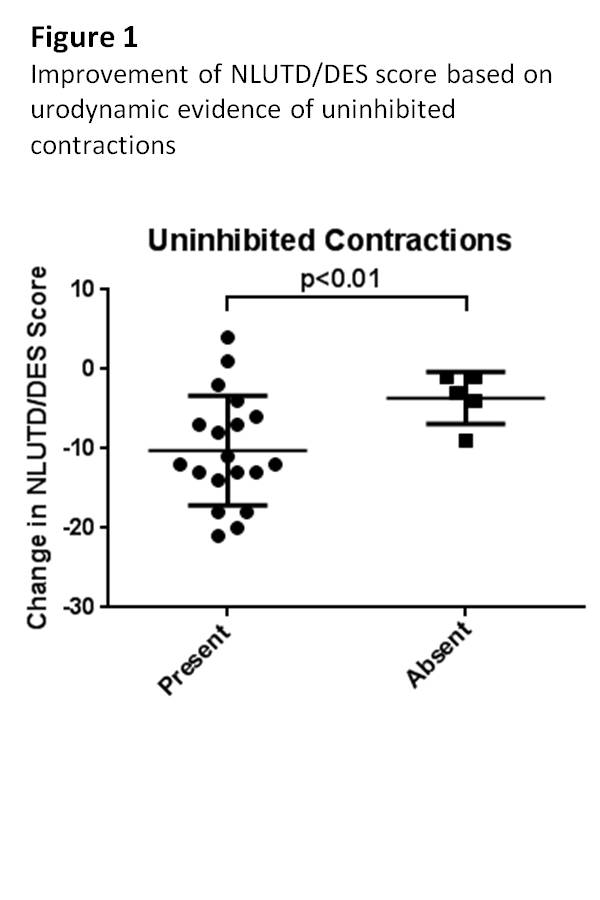-->
|
Back to 2014 Fall Congress Meeting Abstracts
Prospective Evaluation of Urodynamic Findings Associated with Success of Sacral Nerve Modulation in Children
Matthew D. Mason, M.D., Christina B. Ching, M.D., Douglass B. Clayton, M.D., Stacy T. Tanaka, M.D., John C. Thomas, M.D., Mark C. Adams, M.D., John W. Brock, III, M.D., John C. Pope, IV, M.D..
Monroe Carell Jr. Children's Hospital at Vanderbilt, Nashville, TN, USA.
BACKGROUND:
Sacral nerve modulation (SNM) has previously been shown to be safe and effective in children with refractory urinary dysfunction in children. We hypothesize that specific findings on pre-SNM urodynamic evaluation may be predictive of degree of symptom improvement after SNM.
METHODS:
Pediatric patients undergoing SNM at our institution were included in this study. Indications for SNM were urinary symptoms refractory to conservative therapy including medical therapy, dietary and behavioral modification, and constipation treatment. All patients had videourodynamic evaluation prior to SNM. SNM implantation was performed in a two-stage procedure in all patients, who were then followed prospectively. Prior to implantation and at each follow-up visit, patients and their families completed the Vancouver NLUTD/DES questionnaire, a validated instrument to assess bowel and bladder dysfunction. Improvement in NLUTD/DES score was calculated by subtracting each patient's preoperative score from the score at most recent follow-up. The association of specific urodynamic findings with improvement in NLUTD/DES score was analyzed.
RESULTS:
Twenty-five patients underwent SNM between December 2010 and December 2013. Median patient age was 9.1 years (range 5.5 – 17.4). Median follow-up was 12.7 months (range 1.5 – 30.5). Mean Pre-SNM and Post-SNM NLUTD/DES scores for the entire cohort were 24.1 and 15.3, respectively (p<0.0001). Patients with uninhibited bladder contractions on urodynamic evaluation had a significantly greater improvement in NLUTD/DES score compared to the rest of the cohort (p<0.01), as shown in Figure 1. No other urodynamic finding (i.e. poor emptying, small bladder capacity, or staccato voiding) correlated significantly with NLUTD/DES score improvement.
CONCLUSIONS:
Sacral nerve modulation is an effective treatment for bowel and bladder dysfunction in children, on the basis of NLUTD/DES score. Patients with urodynamic evidence of uninhibited bladder contractions may be more likely to have a greater improvement in urinary and bowel symptoms than those without.

Back to 2014 Fall Congress Meeting Abstracts
|


